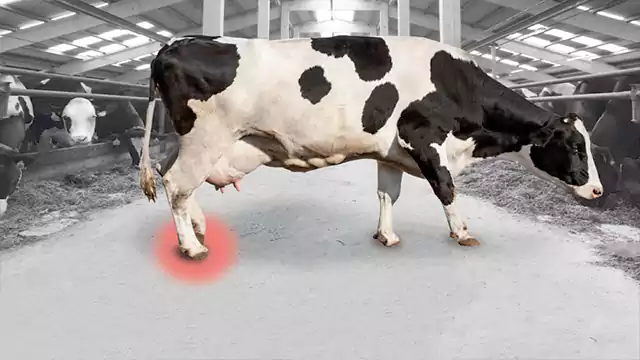Lamness and fertility
One of the important early postpartum problems in cows is lameness. Cows with lameness require more inseminations for pregnancy and a lower pregnancy rate in the first insemination. Within 30 days of calving, lame cows have a 2.63 times higher chance of ovarian follicle cyst.
The reason for the high risk of ovarian cyst in lame cows is that the cytokines that occur due to inflammation or the increase in NEFA level due to the negative energy balance resulting from decreased feed consumption in lame cows block LH release. The increase in levels of NEFA in the blood inhibit the release of LH hormone which is required for ovulation.
Possibility of lameness and dizziness One of the most important postnatal problems in cows is lameness. Lame cows need more AI to conceive and the first AI has a lower incidence rate. Within 30 days of calving, lame cows are 2.63 times more likely to develop ovarian cysts.
The increased risk of ovarian cysts in lame cows is due to the fact that the cytokines produced by inflammation block the LH hormone – in addition, the negative energy balance due to reduced food intake in lame cows. (NEB) increases the level of NEFA. Increasing the level of NEFA in the blood prevents the release of LH hormone, which is essential for ovulation, which causes cysts in cows.
